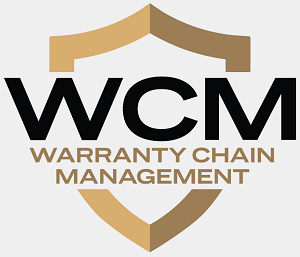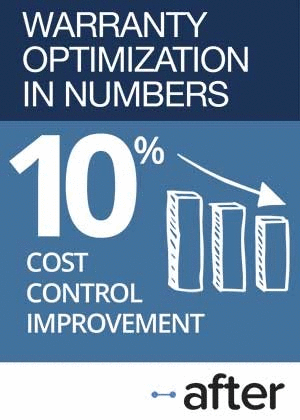Service Contract Pricing: Electronics:
Though the overall average is 17%, there's a wide range of pricing variation based on the duration of coverage and the inclusion of accidental damage coverage. And then there are retailers and administrators that price high because they can. A simple shopping survey of product and protection plan prices reveals the difference.
As the year comes to a close, we're shifting our mystery shopping expedition from consumer electronics to household appliances and outdoor power equipment. But before we do so, here's a look at what we've found so far, by comparing the price of popular electronic products to the price of their protection plans.
Over the course of the last eight newsletters, we've catalogued the price of both products and protection plans for seven different kinds of electronic products at 28 different retailers. That list includes 13 retailers that are clients of SquareTrade Inc., and 15 retailers that are clients of one of eight other service contract administrators.
The 13 retailers working with SquareTrade are Abt Electronics Inc., portions of Amazon.com Inc. (shared with several other administrators), B&H Photo & Electronics Corp., Costco Wholesale Corp., Crutchfield Corp., eBay Inc., Office Depot Inc., QVC Inc., Buy.com Inc. doing business as Rakuten.com, Sam's Club, Staples Inc., Target Corp., and Toys R Us Inc. More details on SquareTrade and these retailers were included in last week's newsletter.
The insurance underwriter backing up SquareTrade at all these retailers except eBay, QVC, and Toys R Us is Starr Indemnity & Liability Co. At both QVC and Toys R Us, however, SquareTrade's underwriter is Continental Casualty Co., and at eBay it is CNA Warranty Services Inc. Both of these underwriters are units of CNA Financial Corp.
The 15 retailers working with other administrators include Adorama Camera Inc., Amazon.com Inc., Best Buy Co. Inc., BJ's Wholesale Club Inc., BrandsMart USA, GameStop Corp., hhgregg.com (Gregg Appliances Inc.), Home Depot Inc., Kmart (part of Sears Holdings Corp.), Lowe's Companies Inc., Micro Center (Micro Electronics Inc.), Newegg Inc., PC Richard & Son, Sears Holdings Corp., and Wal-Mart Stores Inc.
Service Net and AIG were the administrator and underwriter at Best Buy and newegg.com. Warrantech, AMT Warranty and AmTrust Financial Services Inc. were at Amazon.com, BrandsMart USA, and hhgregg. Lowe's protection plans were self-administered, but they were coupled with subsidiaries of Assurant Solutions as both their obligor and underwriter. Assurant was also at Amazon.com. Asurion and CNA were at BJ's Wholesale and Walmart. Asurion and The Warranty Group were working together at Amazon.com, Game Stop, and Home Depot. Micro Center was working with National Product Care Company, TWG Innovative Solutions Inc., and Virginia Surety Company Inc., which are all units of The Warranty Group. New Leaf Service Contracts LLC was the administrator at Adorama, and Fortegra's Lyndon Southern Insurance Co. was the underwriter. FA Service Plans administered the Rescue data recovery service on behalf of Seagate Technology LLC and After Inc. at Amazon.com. Kmart, Sears, and PC Richard were self-administered.
Top Consumer Electronics Categories
At each retailer, we shopped for one of seven different kinds of consumer electronic products: Blu-ray disc players, digital cameras, laptop computers, printers, televisions, video game consoles, and Wi-Fi doorbells. And we logged the corresponding service contracts offered for each, noting the length of coverage and the price of the protection plan.
We should note that in some cases, we went back and filled in the data for retailers that we initially skipped over. For instance, who knew Home Depot sold Blu-ray players? Toys R Us sells digital cameras? Office Depot sells TVs? Well, they do now. And they sell service contracts for them too.
In all, we collected 1,309 different product-protection plan pairings, which ranged in duration from one year (enhancing the product warranty with additional coverages) to five years. As can be seen in Figure 1 below, the vast majority of the service contracts offered were for two or three years.
Figure 1
Length of Service Contracts Offered
(in years of protection)

With products ranging in price from $29 to $2,577, we found corresponding service contracts priced from $2.00 to $920. The former was for a doorbell chime at Walmart, while the latter was for a TV at Sears.
When we divided the price of the service contract by the price of the product it protected, we got a range of percentages that were nothing short of surprising. At one extreme, Staples and SquareTrade wanted only $37 to protect a $1,600 camera for two years (2.3%), while at the other extreme, PC Richard wanted $250 to protect a $300 laptop for five years (83%).
As we've said repeatedly, it pays to shop around, not only for the product, but also for the protection plan. For some product categories, the price difference was attributable to either the presence or absence of accidental damage protection. For others, it was nothing more than the greed of the retailer or the price-setting inexperience of the administrator and/or underwriter. Some prices are far too high, resulting in huge profits, while others are far too low, resulting in huge losses (but not until 2019 or 2020, surprise!).
Average Price of Protection
We took the 1,309 product-protection pairs, divided them into five sub-groups based on the length of coverage, and took a simple average for each. Those results are charted in Figure 2. As one would expect, the short-term contracts that basically overlap the product warranty were priced the lowest, while the five-year contracts were priced the highest. The overall average for all service contracts covering all seven product categories was 17%.
Figure 2
Cost of Service Contracts Offered
Compared to Length of Coverage
(as a percentage of the product's price)

In some cases, for certain products, long-term service contracts were not found. For instance, there were no five-year service contracts offered for either game consoles or Wi-Fi doorbells. For the Xbox One and PlayStation 4, we attribute that to administrator insecurity about losses in the wake of the billion-plus dollars Microsoft Corp. was forced to spend on claims almost a decade ago.
For the doorbells, it's just the newness of the product category, and the many unknowns when it comes to reliability and repair costs. Many retailers, in fact, sold either the August Doorbell Cam or the Ring Video Doorbell, but did not offer any service contracts at all for those products.
As we noted in the November 17 newsletter, this whole product category seems to be uncertain. Is it an Internet product that belongs with the laptops or the smartphones? Is it a home security product that belongs in the aisle with the deadbolts and floodlights? Or is it an electrical product that belongs with the intercoms and thermostats? One retailer even had them pegged as digital cameras, which of course they are, and are not.
Average Price per Product
With all that uncertainty, it's no wonder that the doorbell service contracts were priced above the overall electronics average of 17% of the product's price. In Figure 3, we've charted the average price of protection for the seven product categories, of which four were below average, and three were above average.
Figure 3
Cost of Service Contracts Offered
Average for Seven Types of Electronics
(as a percentage of the product's price)

Printer protection plans were the least expensive of all, averaging 15% of the product's price. That reflects the fact that because the vast majority of the plans don't cover accidental damage, users are on their own if the machine breaks down due to normal wear and tear after the product warranty expires. The price of protection plans for TVs, game consoles and digital cameras were slightly higher, but still below the overall average.
Laptop protection plans were the most expensive, averaging 22% of the product's price. As was mentioned, the Wi-Fi doorbells were also near the top, followed by the Blu-ray players.
Next, we organized the product-protection pairs by the name of the administrator. And once again, we took an average for each group. And yet again, the results were a bit surprising.
In Figure 4, note that the two most expensive groups represented self-administering retailers who are not working with third-party administrators or insurance underwriters. For instance, 46 out of the 50 product-price plans found for Sears and Kmart were priced above average for both the product in question and the length of coverage. At PC Richard, 44 out of the 68 product-protection pairs were priced above average. That's almost 65% over and only 35% under.
We doubt this is a coincidence. One of the primary values of working with outside administrators and insurance companies is the expertise they have when it comes to pricing protection plans. And as conservative as their actuaries tend to be, they are at least willing to offer a price, even for a new product category with unknown loss costs. PC Richard, we note, sold Wi-Fi doorbells but did not offer service contracts for them.
High Prices for Excellent Service?
The protection plans sold by Sears and Kmart, on the other hand, are known for their generous terms and conditions. And the retailers have a fairly deep bench when it comes to service contract expertise. We joke about all their service contracts being priced at exactly 20% of the product they're covering, but that in turn finances perks such as no deductibles, no depreciation on replacements, no matter how old, and no limit on the number of house calls or their cumulative cost. Also, when a product is replaced, the new unit can live out the remaining time left on the contract. With most competitors, the contract is concluded after the replacement is made.
The question, however, is whether this high level of service really matters to electronics shoppers focused on price. It may matter more to home appliance shoppers and outdoor power equipment, which we will turn to in January. For instance, Sears will actually pay for someone to cut your lawn or shovel your snow if your riding mower or snow blower can't be fixed during their repair technician's first home visit. But they won't pay for your tickets to the movies if your TV or Blu-ray player is broken.
Figure 4
Percentage of Service Contracts
Above or Below Average
(for nine administrators)

And then there are a trio of low-priced service contract administrators. We're going to suggest that Assurant Solutions' position at the bottom is subject to change, because so far we've found only a handful of product-protection pairs for the company, at Amazon.com and Lowe's. Several of its top electronics clients have been snatched away by SquareTrade, and Lowe's wasn't a factor in six out of the seven product categories we've shopped so far (we'll turn to major appliances and outdoor power equipment in the new year).
However, Adorama and New Leaf do seem to be a pair of powerful discounters, selling not only the products for less than the competition but also the protection plans. Out of the 79 product-price pairs we've shopped so far, only seven were priced above the average for their duration and product type.
In the middle are four of the largest administrators and underwriters in the business: Asurion, SquareTrade, AIG, and AmTrust. Roughly 60% of the more than a thousand product-protection pairs collected for these four companies were priced below average, while only 40% were priced above average.
We note that both SquareTrade and Asurion are working with two insurance underwriters apiece. SquareTrade was in the process of transitioning from Starr to CNA when Allstate launched its acquisition last week. Asurion, which acquired NEW Customer Service Companies Inc. eight years ago, works with both CNA and Virginia Surety, The Warranty Group's underwriter.
We tested whether there was any difference between the underwriters. At SquareTrade, there was not. Both underwriters were very close to that 60/40 split. But for Asurion, there was quite a difference. Plans underwritten by CNA were priced lower -- almost to New Leaf levels. But about a third of the plans underwritten by Virginia Surety were priced above average. And, of course, The Warranty Group's own administrators were priced very close to PC Richard levels.
AIG's Over and Under
We could create a hundred more charts based on the product being protected, the length of coverage, the retailer, and other permutations. But we'll settle for just one more. In the middle of the middle is AIG, which administers and underwrites the plans for one of the largest consumer electronics retailers of all, and provides the accidental damage coverage for the AppleCare program as well.
We took all 213 product-protection pairs gathered from AIG and its retailers, and ranked them as being either above or below average, based on the length of coverage and the product in question. In Figure 5, the below-average pairs are in blue, while the above-average pairs are in red.
Figure 5
AIG's Protection Plans
Price of Service Contracts Offered
(as a percentage of the product price)

This might be a good time to reveal a flaw built into the over-under model that we're using this week. Given that the average is 17%, all the unders can be anywhere from 0% to 17% below average. But all the overs can be anywhere from 0% to 66% above average. And when you take a simple average, the weight of the overs, when they're really high, tilts the outcome in the opposite direction. There are 545 overs and 764 unders, a 42/58 ratio.
A better measure might be the median, the product-protection point in the middle at 50/50, for which exactly 654 pairs are higher and 654 pairs are lower. Out of the 1,309 product-protection price pairs, the one in the exact middle is a plan sold by QVC and SquareTrade, priced at $75 to cover a $500 printer for three years. That median is only 15%, slightly below the 17% average.
Therefore, we can safely say that based on the price of protection for seven different types of consumer electronics, sold by 28 different retailers and backed by nine different administrators, the typical price is equivalent to roughly 15% to 17% of the price of the product.
Some products cost more, and of course the longer durations also cost more. Plus, the presence or absence of accidental damage protection also affects the price, as does the question of whether coverage begins at the time of sale or after the expiration of the product warranty. Shoppers should take all of these factors into account as they research not only the cost of the product they're buying, but also the cost of the corresponding protection plans.









